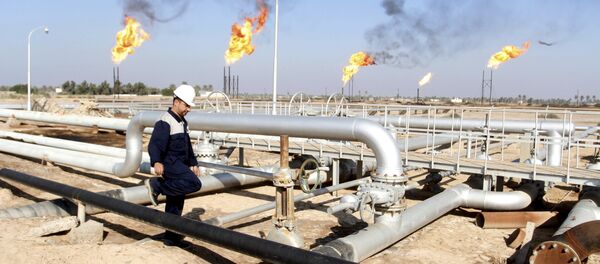The Saudi oil giant Aramco announced last week that it would cut oil prices for Europe, apparently in preparation for Iran’s resumption of oil exports to the region later this year.
However, Arthur Berman, director of Labyrinth Oil Consulting Services in Texas, told Sputnik that Russia, the largest oil exporter to Europe, was likely the real target of Saudi Arabia’s oil policy.
"The largest exporter to Europe is Russia with 1.66 mmbpd [million barrels per day], compared to Saudi Arabia with 0.89 mmbpd, so market share competition with Russia seems the most likely target," Berman said.
By contrast, Aramco said that light crude prices for the Asian market in February would rise by $0.60 per barrel compared to January.
Niu Song, a research associate at Shanghai International Studies University’s Middle East Institute, said that Riyadh’s decision to hike crude prices in Asia, while preserving the current volumes of oil exports, has already had a great influence on Russia.
"Russia is increasing oil extraction so as to grab an even bigger share of market," Song said. "Oil wars continue to rage between Russia and Saudi Arabia, especially in the Chinese market."
He added that the Saudi monarchy is going to great lengths to increase its share of the Asian crude oil market. Saudis have invested heavily in the Chinese, Korean and Japanese oil industry in a bid to bind the Asia Pacific to its exports, Song explained.
James Nixon, chief European economist at Oxford Economics, a commercial venture with Oxford University’s business college, told Sputnik that the recent news from Saudi Arabia, including Aramco’s hint at a possible share sale, reflects the growing stress caused by lower oil prices to the Saudi budget.
"What the Saudis have done is reduce the discount for their light crude to the Dubai benchmark to just 80 cents (from $1.40) previous. I think a reduction in the spread is inevitable given the lower level of prices," Nixon said.
He predicted that in the long term the oil market would continue to be oversupplied. A return to flow equilibrium is therefore unlikely until at least the end of 2017.




